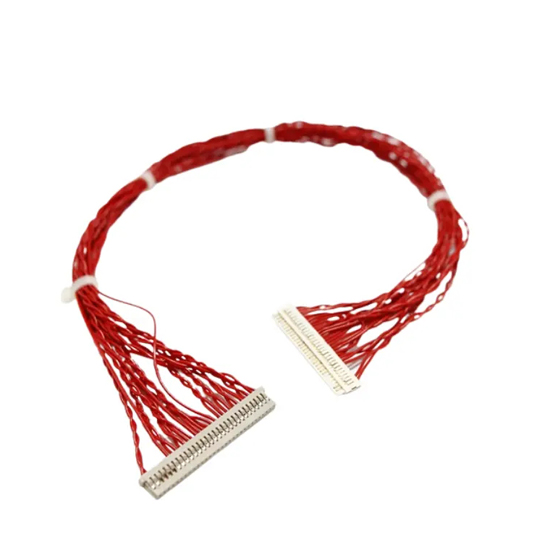
What are LVDS?
LVDS, or Low Voltage Differential Signaling, can be referred to as a low voltage differential signal technology. It is primarily characterized by its low power consumption, low error rate, low crosstalk, and low radiation. The core technology of LVDS involves the use of a very low voltage swing high-speed differential to transmit data, enabling point-to-point or point-to-multipoint connections. The transmission medium for LVDS is typically PCB traces or balanced cables.

How does LVDS work?
The working principle of LVDS involves the transmission of data through differential signals between drivers and receivers. The source driver consists of a constant current source (typically around 3.5mA, not exceeding 4mA) driving a pair of differential signal lines. The receiver has a high DC input impedance, so almost all of the driving current flows through a 100Ω termination resistor, resulting in a voltage of approximately 350mV at the receiver input. When the source driver changes its state from high to low or vice versa, the current direction through the termination resistor changes, leading to a change in the high or low logic state at the receiver.

LVDS Harness Common problems
Wire harness is a commonly used cable assembly for high-speed data transmission, commonly found in electronic equipment, computer monitors, liquid crystal panels and other fields. Here are some common problems with LVDS harnesses: signal quality issues, harness damage, harness length limitations, contact issues, environmental interference, standard compatibility, and more

What are LVDS used for?
LVDS(Low-voltage Differential Signal) is commonly used for high-speed data transmission over copper interconnects. It utilizes advanced analog circuit technology to realize gigabit data transmission. As a common interface standard for high-speed data transmission, LVDS has been widely used in display technology, industrial automation, medical imaging, data communications, aerospace and defense, etc
LVDS Features
Low power consumption
LVDS utilizes low voltage and differential signal transmission, resulting in lower power consumption.
High transmission rate
LVDS supports high-speed data transmission, typically reaching speeds of several hundred megabytes per second.
Strong noise immunity
LVDS employs differential transmission, which reduces the impact of noise and interference, enhancing its noise immunity.
Low electromagnetic radiation
Due to the differential signal transmission, LVDS emits low levels of electromagnetic radiation, minimizing interference with surrounding electronic devices.
High reliability
LVDS has relaxed requirements on cable length, signal attenuation, and other factors during transmission, leading to high reliability.
Flexibility
LVDS can adapt to different transmission distances and data bandwidth requirements, offering high flexibility.

case
In a joint project in Hanoi, Vietnam, LVDS cable assemblies are being used to enhance data transmission in high-speed network infrastructure. These cable assemblies facilitate seamless communication between network switches, routers, and servers, thereby improving network performance and reducing latency. The successful application of LVDS technology supports the growing digital ecosystem in the region, benefiting industries such as cloud computing, e-commerce and digital services.Contact us now to receive a professional quote.




